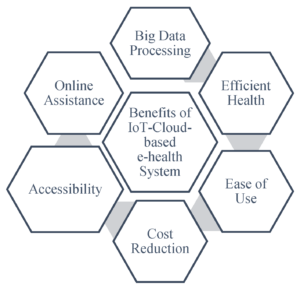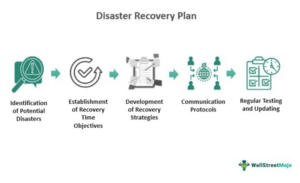Welcome to our comprehensive guide on scalable cloud architecture! In today’s fast-paced digital world, businesses are constantly seeking ways to optimize their operations, reduce costs, and enhance performance. Scalable cloud architecture offers a revolutionary solution that not only meets these requirements but also enables organizations to adapt and grow seamlessly. In this article, we will delve into the intricacies of this cutting-edge technology, exploring its benefits, implementation strategies, and real-world success stories. So, let’s embark on a journey to unlock the true potential of scalable cloud architecture!
Understanding Scalable Cloud Architecture: A Holistic Overview
In this section, we will provide an in-depth understanding of scalable cloud architecture, its core principles, and the fundamental components that make it possible. From elastic computing resources to virtualization techniques, we will explore how the cloud infrastructure allows for seamless scalability and flexibility.
The Core Principles of Scalable Cloud Architecture
Scalable cloud architecture is built upon a set of core principles that enable organizations to scale their resources dynamically. One of these principles is elasticity, which refers to the ability to quickly and easily scale computing resources up or down based on demand. By leveraging cloud services, businesses can allocate resources on-demand, ensuring optimal performance and cost-efficiency.
Another key principle is virtualization, which involves the abstraction of computing resources from their physical hardware. Through virtualization, multiple virtual machines (VMs) or containers can run on a single physical server, enabling efficient resource utilization and improved scalability. Virtualization also allows for easy migration and replication of workloads, ensuring high availability and fault tolerance.
The Fundamental Components of Scalable Cloud Architecture
Scalable cloud architecture comprises several fundamental components that work together to enable dynamic resource allocation and scalability. One of these components is the cloud service provider (CSP), which offers the infrastructure, platforms, and software services necessary for building scalable applications. Popular CSPs include Amazon Web Services (AWS), Microsoft Azure, and Google Cloud Platform (GCP).
Another crucial component is the use of containers and container orchestration platforms like Docker and Kubernetes. Containers provide a lightweight and portable way to package and deploy applications, while orchestration platforms manage the deployment, scaling, and monitoring of containerized applications. Together, containers and orchestration platforms enable organizations to build and manage highly scalable and resilient cloud-native applications.
The Benefits of Scalable Cloud Architecture
Discover the myriad of advantages that come hand in hand with scalable cloud architecture. From cost savings through pay-as-you-go pricing models to enhanced performance and improved reliability, we will discuss how this innovative approach can revolutionize your business operations.
Cost Savings through Pay-as-You-Go Pricing Models
One of the key benefits of scalable cloud architecture is the potential for significant cost savings. Traditional on-premises infrastructure often requires substantial upfront investments in hardware and software licenses, which can be a barrier to entry for many businesses. In contrast, scalable cloud architecture allows organizations to pay only for the resources they consume on a usage basis, eliminating the need for large upfront investments.
By leveraging pay-as-you-go pricing models, businesses can scale their resources up or down based on demand, avoiding the costs associated with over-provisioning or under-utilization. This flexibility allows organizations to optimize their IT budgets and allocate resources where they are most needed, resulting in cost savings and improved financial efficiency.
Enhanced Performance and Improved Reliability
Scalable cloud architecture empowers businesses to achieve enhanced performance and improved reliability. With the ability to quickly scale resources in response to demand fluctuations, organizations can ensure optimal performance during peak periods, such as seasonal sales or high-traffic events. This scalability also enables businesses to meet user expectations by providing fast response times and seamless user experiences.
Furthermore, scalable cloud architecture incorporates built-in redundancy and fault tolerance mechanisms. By distributing workloads across multiple servers and data centers, organizations can minimize the risk of downtime and data loss. In the event of a hardware failure or network disruption, the workload seamlessly transitions to alternative resources, ensuring uninterrupted availability and business continuity.
Implementing Scalable Cloud Architecture: Best Practices and Strategies
Ready to embark on your cloud journey? In this section, we will guide you through the implementation process, providing invaluable tips, best practices, and strategies to ensure a successful transition to a scalable cloud architecture. From choosing the right cloud service provider to designing fault-tolerant systems, we’ve got you covered!
Choosing the Right Cloud Service Provider
When implementing scalable cloud architecture, selecting the right cloud service provider (CSP) is crucial. Each CSP has its own strengths, pricing models, and service offerings, so it’s essential to evaluate your specific requirements and choose a provider that aligns with your business goals. Consider factors such as geographic availability, service-level agreements, security measures, and customer support when making your decision.
Additionally, it’s important to consider the scalability and flexibility of the CSP’s infrastructure and services. Look for features such as auto-scaling, load balancing, and serverless computing, which can greatly simplify the management of scalable applications and ensure optimal resource utilization.
Designing Fault-Tolerant Systems
In a scalable cloud architecture, designing fault-tolerant systems is crucial to ensure high availability and minimize the impact of failures. This involves implementing redundancy at various levels, including hardware, software, and data. By distributing workloads across multiple servers and data centers, organizations can minimize the risk of single points of failure and ensure continuous operation.
Additionally, it’s important to implement automated monitoring and alerting systems to quickly identify and respond to any potential issues. By proactively detecting and mitigating problems, organizations can minimize downtime and maintain a high level of service availability.
Real-World Success Stories: How Scalable Cloud Architecture Transformed Businesses
Learn from the experiences of industry leaders who have harnessed the power of scalable cloud architecture to revolutionize their operations. Through insightful case studies and inspiring stories, we will showcase how businesses across various sectors have achieved unprecedented growth and efficiency.
Netflix: Scaling to Meet Global Demand
Netflix, the world’s leading streaming platform, is a prime example of how scalable cloud architecture can transform businesses. By leveraging the scalability and flexibility of the cloud, Netflix has been able to handle massive global demand, delivering high-quality video content to millions of users simultaneously. Through the use of microservices and containerization, Netflix can rapidly deploy and scale its infrastructure, ensuring a seamless user experience.
Furthermore, Netflix utilizes machine learning algorithms to personalize content recommendations and optimize streaming quality. By leveraging the cloud’s computing power, they can process vast amounts of data in real-time, providing users with a personalized and immersive entertainment experience.
Slack: Enabling Collaboration at Scale
Slack, a popular team collaboration platform, has successfully leveraged scalable cloud architecture to meet the needs of millions of users and businesses worldwide. By utilizing cloud resources, Slack can handle high message volumes and support real-time communication and collaboration across distributed teams.
Scalable cloud architecture allows Slack to seamlessly scale its infrastructure as the user base grows, ensuring fast and reliable message delivery. This scalability also enables Slack to integrate with a wide range of third-party services, providing users with a comprehensive and customizable collaboration experience.
Security Considerations in Scalable Cloud Architecture
As with any technological advancement, security is of utmost importance. In this section, we will explore the security considerations and challenges associated with scalable cloud architecture. From data protection measures to compliance requirements, we will provide you with the knowledge to build a robust and secure cloud infrastructure.
Data Protection and Encryption
Protecting sensitive data is a critical aspect of scalable cloud architecture. Organizations must implement robust encryption mechanisms to ensure the confidentiality and integrity of their data. This includes encrypting data at rest and in transit, as well as managing cryptographic keys securely.
Furthermore, it’s important to implement access controls and authentication mechanisms to prevent unauthorized access to data and resources. This involves employing strong password policies, multi-factor authentication, and role-based access controls to ensure that only authorized individuals can access sensitive information.
Compliance and Regulatory Requirements
Organizations operating in certain industries or regions may be subject to specific compliance and regulatory requirements. When implementing scalable cloud architecture, it’s crucial to ensure that the chosen cloud service provider complies with these requirements. This includes adhering to industry-specific regulations such as HIPAA for healthcare or GDPR for data protection in the European Union.
Additionally, organizations must implement appropriate audit and logging mechanisms to track and monitor access to sensitive data. This enables organizations to demonstrate compliance and respond to any potential security incidents effectively.
The Role of Artificial Intelligence and Machine Learning in Scalable Cloud Architecture
Discover how artificial intelligence and machine learning are revolutionizing scalable cloud architecture. We will explore the use cases and benefits of integrating these cutting-edge technologies into your cloud infrastructure, propelling your business to new heights of efficiency and innovation.
Optimizing Resource Allocation with Machine Learning
Machine learning algorithms can analyze historical usage patterns and predict future resource requirements, enabling organizations to optimize resource allocation in a scalable cloud architecture. By leveraging machine learning, businesses can ensure that resources are provisioned and scaled automatically, based on predicted demand. This not onlyoptimizes cost-efficiency but also improves performance by dynamically allocating resources when and where they are needed most.
Enabling Intelligent Automation with AI
Artificial intelligence (AI) plays a crucial role in enabling intelligent automation in scalable cloud architecture. AI-powered automation can streamline repetitive tasks, such as provisioning and scaling resources, allowing organizations to focus on more strategic initiatives. By leveraging AI algorithms, businesses can automate decision-making processes, improve operational efficiency, and reduce human error.
Furthermore, AI can be applied to enhance security in scalable cloud architecture. Machine learning algorithms can analyze vast amounts of data to detect anomalies and potential security threats. By identifying patterns and deviations from normal behavior, AI can help organizations proactively mitigate security risks and respond to incidents in real-time.
Scaling Applications in the Cloud: Techniques and Best Practices
In this section, we will delve into the nitty-gritty of scaling applications in the cloud. From horizontal and vertical scaling to load balancing and auto-scaling, we will equip you with the knowledge to optimize your applications for peak performance and cost-efficiency.
Horizontal Scaling: Adding More Instances
Horizontal scaling involves adding more instances of an application to distribute the workload. By spreading the load across multiple instances, organizations can handle increased traffic and ensure that each instance operates within its optimal capacity. This approach allows for improved performance and high availability, as instances can be easily added or removed based on demand.
When horizontally scaling applications, it’s important to consider data consistency and synchronization. By leveraging distributed databases or caching mechanisms, organizations can ensure that data remains consistent across all instances. Additionally, implementing load balancing techniques can evenly distribute requests among instances, further enhancing performance and scalability.
Vertical Scaling: Increasing Resources
Vertical scaling involves increasing the resources allocated to a single instance of an application. This can be achieved by upgrading the instance’s hardware specifications, such as CPU, memory, or storage capacity. Vertical scaling is suitable for applications that require more processing power or memory to handle increased demand.
When vertically scaling applications, organizations should consider the limitations of the underlying hardware and the potential impact on application performance. It’s important to monitor resource utilization and adjust accordingly to ensure optimal performance and cost-efficiency.
Load Balancing: Distributing Workload
Load balancing plays a crucial role in scaling applications in the cloud. By distributing the workload across multiple instances or servers, load balancing ensures that no single instance becomes a bottleneck and that resources are utilized efficiently. Load balancers can be implemented at various levels, including the application layer, network layer, or even within containers.
Load balancing techniques can include round-robin, least connection, or weighted algorithms, depending on the specific requirements of the application. Load balancers can also perform health checks on instances, automatically removing any instances that are unresponsive or experiencing issues, thus ensuring high availability and fault tolerance.
Auto-Scaling: Dynamic Resource Allocation
Auto-scaling enables organizations to automatically adjust resource allocation based on predefined rules or thresholds. By monitoring application metrics, such as CPU utilization or request latency, auto-scaling mechanisms can dynamically add or remove instances to match the current demand. This ensures that resources are scaled up during peak periods and scaled down during periods of low activity, optimizing cost-efficiency.
When implementing auto-scaling, organizations should carefully define the scaling policies and thresholds. It’s important to consider factors such as response time requirements, service-level agreements, and the time it takes to provision new instances. By fine-tuning these parameters, organizations can achieve a balance between performance, cost, and resource utilization.
Scalable Cloud Architecture for E-commerce: Unlocking the Potential of Online Retail
Discover how scalable cloud architecture is transforming the e-commerce landscape. From handling high traffic volumes during peak shopping seasons to ensuring seamless customer experiences, we will explore how online retailers can leverage the cloud to stay ahead of the competition.
Elasticity for Peak Demand
Scalable cloud architecture provides e-commerce businesses with the elasticity needed to handle high traffic volumes during peak shopping seasons, such as Black Friday or Cyber Monday. By leveraging auto-scaling mechanisms, organizations can ensure that their infrastructure scales up seamlessly to meet increased demand, without compromising performance or availability.
This elasticity allows online retailers to provide a seamless shopping experience for customers, even during periods of high demand. By ensuring fast response times and uninterrupted access to product information and checkout processes, organizations can maximize sales opportunities and customer satisfaction.
Global Reach and Scalability
Scalable cloud architecture enables e-commerce businesses to expand their reach and cater to a global audience. By leveraging the global infrastructure provided by cloud service providers, organizations can deploy their applications in multiple regions, ensuring low-latency access for customers worldwide. This global scalability allows businesses to tap into new markets and serve customers in different geographical locations without investing in physical infrastructure.
Furthermore, scalable cloud architecture enables the seamless integration of third-party services, such as payment gateways or shipping providers, to streamline the e-commerce process. By utilizing cloud-based APIs and services, organizations can easily connect with a wide range of partners and service providers, enhancing the overall customer experience and operational efficiency.
The Future of Scalable Cloud Architecture: Trends and Innovations
In this section, we will gaze into the crystal ball and explore the future of scalable cloud architecture. From edge computing to serverless computing, we will discuss the emerging trends and innovations that are set to shape the cloud landscape in the coming years.
Edge Computing: Bringing Computing Closer to the Source
Edge computing is an emerging trend in scalable cloud architecture that focuses on processing data closer to the source, rather than relying on centralized cloud infrastructure. By deploying computing resources at the edge of the network, organizations can reduce latency and improve response times for applications that require real-time processing, such as IoT devices or autonomous vehicles.
This shift towards edge computing enables organizations to leverage the benefits of scalable cloud architecture even in environments with limited or unreliable network connectivity. By distributing computing power and intelligence closer to the data source, edge computing enhances scalability, security, and privacy, opening up new possibilities for various industries.
Serverless Computing: Focus on Application Logic
Serverless computing is another innovative trend in scalable cloud architecture that eliminates the need for managing server infrastructure. In a serverless architecture, organizations focus solely on developing and running application logic, without the need to provision or manage servers. Cloud service providers handle the underlying infrastructure, automatically scaling resources based on demand.
Serverless computing offers organizations increased agility, as they can focus on developing and iterating on application functionality without worrying about infrastructure management. This trend also promotes cost-efficiency, as organizations only pay for the actual execution time of their applications, rather than for idle resources.
Choosing the Right Scalable Cloud Architecture Solution for Your Business
Ready to take the plunge into scalable cloud architecture? In this section, we will guide you through the process of selecting the right solution for your specific business needs. From public, private, and hybrid cloud models to evaluating service-level agreements, we will provide you with the tools to make an informed decision.
Public, Private, or Hybrid Cloud: Considerations and Trade-offs
When choosing a scalable cloud architecture solution, organizations must consider the trade-offs between public, private, and hybrid cloud models. Public clouds offer scalability, cost-efficiency, and access to a wide range of services, but may have limitations in terms of data privacy and compliance requirements.
Private clouds, on the other hand, provide greater control over data and security, but may require higher upfront investments and ongoing maintenance. Hybrid cloud models combine the benefits of both public and private clouds, allowing organizations to leverage the scalability of public clouds while maintaining control over sensitive data in private infrastructure.
Evaluating Service-Level Agreements (SLAs)
Service-level agreements (SLAs) outline the performance and availability guarantees provided by cloud service providers. When selecting a scalable cloud architecture solution, organizations should carefully review and evaluate SLAs to ensure they align with their business requirements. Key factors to consider include uptime guarantees, support response times, and data recovery and backup policies.
Additionally, organizations should consider the geographical availability of cloud service providers. Depending on the specific needs of the business, it may be important to select a provider with data centers in specific regions to ensure low-latency access or compliance with data sovereignty regulations.
In conclusion, scalable cloud architecture offers a transformative approach to business operations, enabling organizations to optimize performance, reduce costs, and adapt to changing requirements seamlessly. Through this comprehensive guide, we have explored the core principles, benefits, implementation strategies, and real-world success stories of scalable cloud architecture. Armed with this knowledge, you are now equipped to embark on your cloud journey and unlock the true potential of efficiency and flexibility. Embrace the power of scalable cloud architecture, and propel your business towards a future of innovation and growth.



